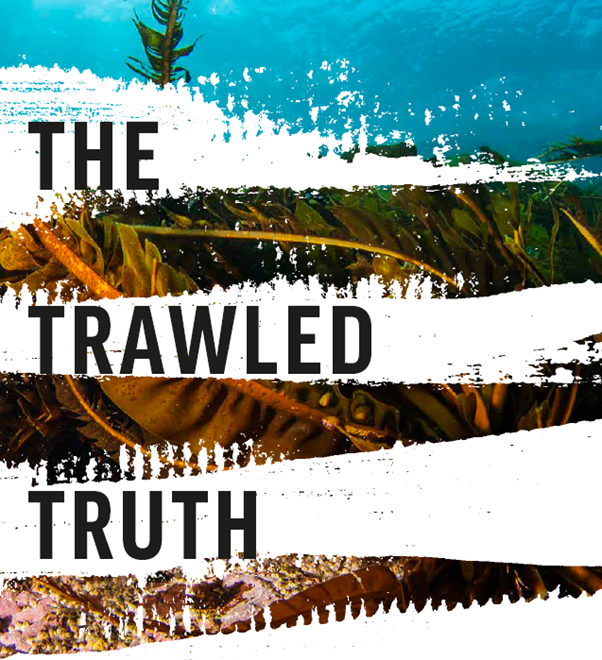Report | May, 2025
The Trawled Truth: The Case for Banning Bottom Trawling in UK Marine Protected Areas
The UK’s offshore marine protected areas (MPAs) suffered over 20,000 hours of suspected bottom-trawl fishing in 2024, which would score tracks on the sea bed reaching over eight times around the UK, this Oceana report has revealed. Bottom trawling is permitted in 90% of UK MPAs, making the network little more than a sham that does not do enough to protect nature, says Oceana.
Only 38 of the UK’s 377 MPAs are fully protected by law from destructive bottom trawling, and satellite tracking data shows that offshore MPAs alone suffered over 20,600 hours of suspected bottom trawling in 2024.
Bottom trawlers are large, fuel-intensive vessels that drag heavy metal gear and nets – often weighing several tonnes – across the seafloor, indiscriminately hoovering up sea life and effectively bulldozing marine habitats. Almost all seabed habitats around the UK are currently categorised as ‘poor status’, with bottom trawling identified as the main pressure.
A mix of countries were responsible for the suspected trawling, Oceana found, with French vessels assigned to 55% of the tracked hours and UK vessels 19%, the remaining fishing was split into small shares between a wider group of states.
The three most exploited MPAs were off the coast of Cornwall and Scotland and suffered a combined 8,597 hours of suspected bottom trawling. The Western Channel and Southwest Deeps (East) MPAs off Cornwall are home to wildlife ranging from cat sharks to cuckoo rays to threatened fan mussels. The West of Scotland MPA boasts delicate, slow-growing corals; orange roughy, which can live for 150 years; and spawning areas of the commercially important blue ling.
These results are an underestimation of the scale of the damage, says Oceana. Firstly, because the analysis excludes inshore MPAs, and secondly, Norwegian vessels could not be included due to a lack of information on their fishing gear.
Trawling ban boon
Banning trawling in MPAs would be a win-win-win for nature, small-scale fishers, and the taxpayer. The benefits for the fishing industry, tourism, climate regulation and other services provided by a healthy ocean worth a net gain of £2.57-3.5 billion over 20 years could be delivered by a ban in the UK’s offshore seabed MPAs alone, previous research has estimated.
A ban also has strong public backing: eight in ten UK adults think that bottom trawling should be banned in MPAs, polling carried out for Oceana showed, and 64% mistakenly believe that that is already the case.
Patchy protection
So far, the UK Government’s limited measures to manage bottom trawling in MPAs have centred around restrictions only for specific ‘features’, such as reefs. This isolates fragments of habitat and forestalls any real chance of regeneration and recovery, threatening the UK’s commitment to protecting 30% of land and sea by 2030.
The value of protecting the entirety of each marine protected area should not be underestimated. The report cites the example of Lyme Bay, England, where partial ‘features’ protection saw an increase in abundance of marine life of 15%, but in areas where the whole site was free of trawling, that figure was 95%. Whole-site bans are also three times cheaper to enforce according to Scottish Government estimates, the report highlights.
The UK Government had committed to introducing laws to protect MPAs from bottom trawling before the end of 2024, but this deadline has been missed, and no new date has been set.

